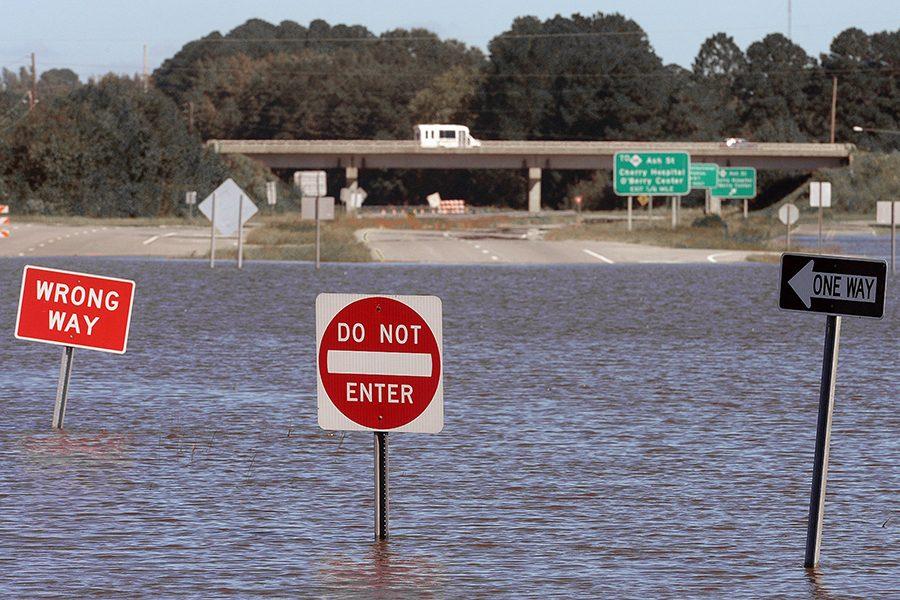Hurricane Matthew Leaves Trail of Destruction
Powerful storm on the east coast results in casualties, widespread damage and serious flooding.
PHOTO | MCT Campus
A highway in Goldsboro, N.C. is flooded as a result of Hurricane Matthew.
The first major hurricane to hit the U.S. since 2005 has resulted in a worldwide death toll of over 1,000 and has left hundreds of thousands homeless, according to nbcnews.com. At least 39 of these deaths have occurred in five southeastern states with Florida and the Carolinas getting hit the hardest. The storm, which first appeared near southern Africa Sept. 28, has resulted in major damage throughout the Caribbean and mainland U.S.
The storm gained the speed and strength of a Category 5 hurricane in record timing, according to nationalgeographic.com. Matthew first made landfall in Haiti and eastern Cuba just days later as a Category 4 storm. There are reports that over 90 percent of Haiti’s crops have been destroyed, in addition to signs of a severe cholera outbreak occurring because of a lack of clean water, according to nationalgeographic.com.
“The summer going into my junior year, I had the amazing opportunity to fly down to Port au Prince, Haiti, with the Global Orphan Project,” senior Chloe Long said. “Seeing the hurricane on maps and hearing about it for the first time absolutely devastated me; all I could think about were the people who welcomed me without due cause, who I fell in love with in just a short week, were being torn down again by more natural disasters.”
Tropical storms typically lose strength as they cross over land but Matthew only weakened slightly after hitting Haiti, rural Cuba and the Bahamas, according to nbcnews.com. The storm continued on its path northward and became the first major hurricane – Category 3 or higher – to hit mainland U.S. since Hurricane Wilma in 2005. Matthew’s eye narrowly avoided the east coast of Florida but still caused five casualties, major flooding and other damage, according to nationalgeographic.com.
“Being the native Floridian that I am, I blew off the news of the storm just like most people here. So naturally we didn’t start preparing until the last minute,” Claudia Gonzalez and half-sister of junior Angela Sandoval said. “Luckily I live inland so the worst that happened was that we lost power for a few days.”
The storm continued to move north as it traveled just off of the Georgia coast, officially making landfall in South Carolina as a Category 1 Oct. 8. Millions along the coast evacuated but not enough; in addition, the storm has caused an estimated $10 billion in damage in the U.S. alone.
While the actual storm is no longer a problem, North Carolina is still dealing with severe flooding as rivers throughout the state continue to overflow.



